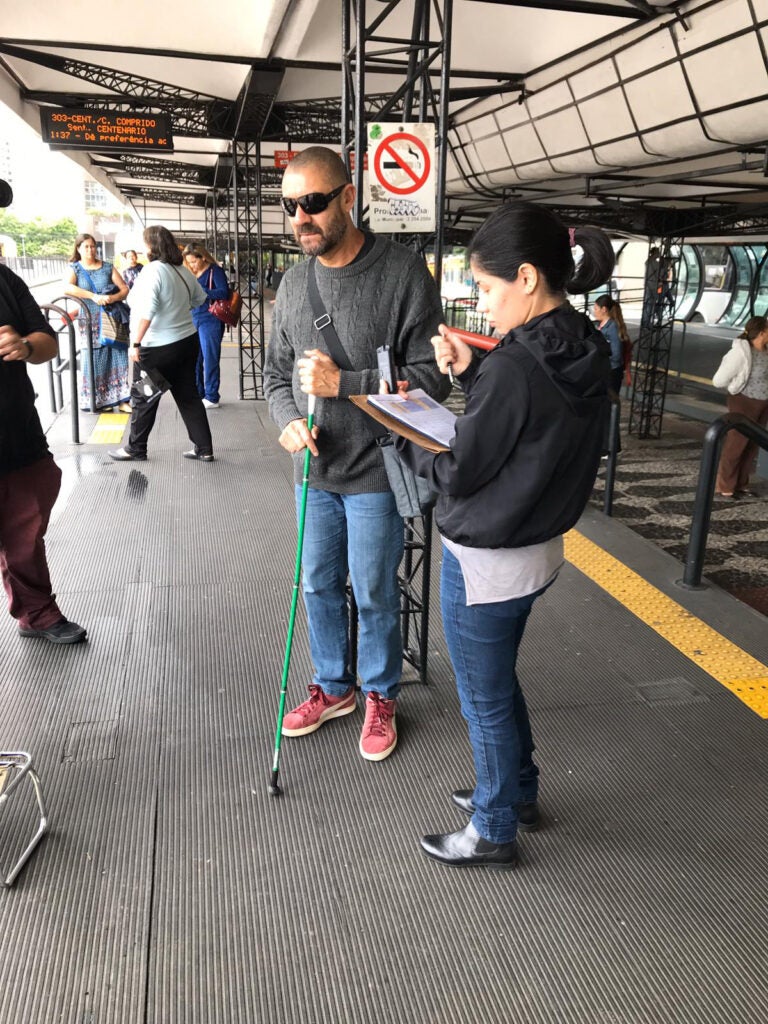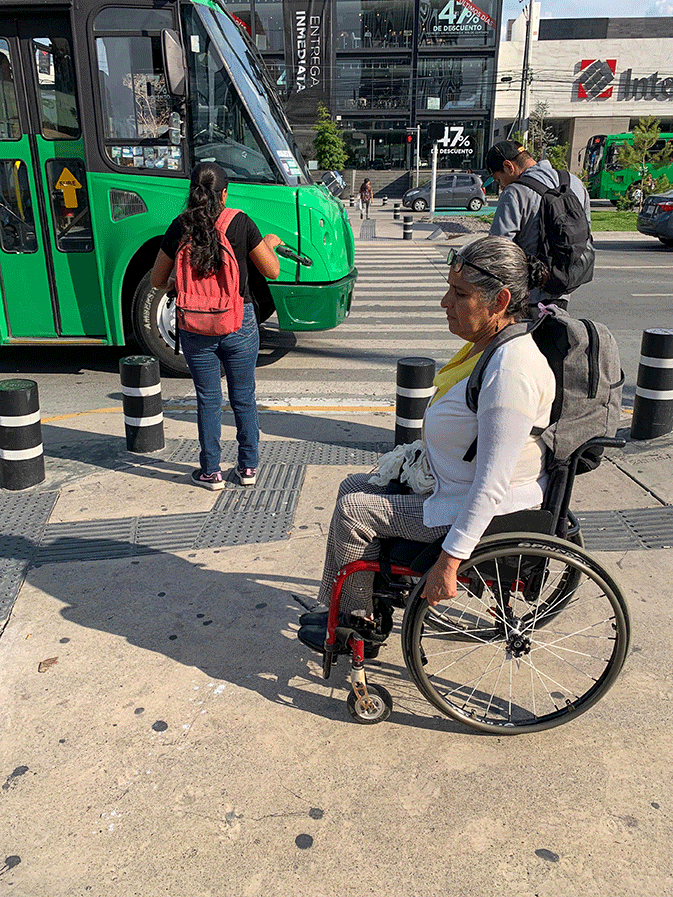Written by Lynn Scholl, Alana Fook, Juan David Barahona and Seonhwa Lee

Mobility and accessibility are essential elements for a dignified life and the full development of people and societies. Efficient, safe, affordable, and accessible transportation systems not only promote economic productivity and create jobs but can increase access to employment, recreational, and other essential life-shaping opportunities that enable people to improve their living conditions and escape poverty.
However, transport too often poses more, not less, barriers for people in Latin America and the Caribbean. These can include physical barriers faced by a person with a disability trying to board a public transit vehicle poorly equipped to meet their needs, or time and economic barriers faced by a resident in an informal settlement in the urban periphery, who must travel long distances and on multiple modes to reach formal employment opportunities, or a single parent who takes children to school every day, who due to a lack of resources must resort to lower quality modes of transport, leaving little time or money to participate in the labor market or other activities. For poor and other disadvantaged groups that may already face differential access to employment and other economic opportunities, these transport barriers can deepen and compound existing inequities and social exclusion.
Thus, ensuring equitable access to opportunities in the region is critical to alleviating poverty and fostering social inclusion. This is particularly relevant in a region that suffers from high rates of poverty and inequality, a reality that COVID-19 has significantly deteriorated. In 2020, a third of the population of Latin America and the Caribbean was living in poverty and more than 1 in 10 persons were living in extreme poverty. Today, Latin America and the Caribbean remains as one of the most unequal regions in the world, with the share of national income held by the richest 10 percent of the population 22 times that of the share held by the bottom 10 percent.

Specific population groups such as low-income populations, women, children, indigenous peoples, LGBTQ+, Afro descendants, and persons with disabilities have been traditionally left behind during the planning of transport systems and are often more likely to face significant transport barriers. For example, women often face greater financial and time burdens related to travel due to more complex travel patterns, diverse trip purposes, in public transit systems that expose them to greater risks, leaving little time for other activities (also referred to as time poverty). Children living in low-income areas often experience large negative impacts due to lower access to safe transport infrastructure and services, adversely affecting their independent mobility and development. Persons with disabilities and the elderly often face severe barriers in terms of physical accessibility and affordability of adequate transportation services and infrastructure, which prevent them from freely navigating their environment and accessing opportunities.
While disadvantaged groups are more likely than others to depend on public transit and on walking for their daily mobility needs, they are also more likely to experience transport disadvantage and economic or physical barriers in transport systems to meet their objectives of mobility. In addition, not everyone in Latin America and the Caribbean can afford public transit, and many people have to make trade-offs between the cost of accessing public transport and other goods, services, or opportunities for themselves and/or other members of their family, leading to low-income groups relying on walking as a key mode of transport. Yet, residents of less affluent communities and neighborhoods are more likely to face poor-quality or non-existent pedestrian and cycling infrastructure, which is essential for safe active transportation. Additionally, high rates of crime and sexual harassment in public transit and public spaces, can limit the times of day, contexts, and places that many of these groups, choose to travel, leading and compounding social exclusion and inequality.

Then, how can improvements to transport reduce poverty and inequality and foster socially inclusive development in the region?
To answer this question, an interdisciplinary team of experts set out to understand transportation disparities from multiple perspectives and disciplines.Recognizing that the accessibility is influenced by multiple factors including where people live, the locations of major activity centers, as well as the degree of coverage, quality, affordability and integration of transportation infrastructure and services, the team took a holistic and interdisciplinary approach that considers how spatial inequalities influence accessibility for the most vulnerable.
Documenting the findings of this effort, Transport for Inclusive Development: Defining a Path for Latin America and the Caribbean uncovers the role that barriers associated with transport in urban and rural areas can play in deepening social disadvantage and poverty. It also outlines a way forward to foster more equitable and inclusive transport systems in both urban and rural areas of the region.
It argues that first and foremost, leveraging the potential for transport investments and policies to foster socially inclusive development demands a clear understanding and diagnosis of the challenges faced by disadvantaged populations in the region. Such efforts should actively involve disadvantaged and vulnerable groups in the planning and decision-making process and target transport investments to address existing gaps in and barriers to mobility and accessibility to opportunities and to mitigate the negative impacts of transport such as noise and air pollution and traffic injuries and deaths that so often disproportionately affect poor and marginalized groups in the region.
Thus, promoting accessible, inclusive, and affordable mobility for all will require well-targeted public policy efforts. Given the host of socioeconomic challenges facing Latin America and the Caribbean, this is no small challenge. However, by embracing more data-driven, technology-enabled, and accessibility-focused (including economic, physical and spatial considerations that affect access) measures, and by strengthening and integrating planning institutions responsible for transport and land use planning and investing in transport infrastructure and services that are designed, implemented, and monitored to be inclusive, policymakers and planners can make great strides towards ensuring that mobility effectively serves as an enabler of social and economic progress rather than a barrier to it.
Publication Launch
We invite you to watch the recording of our Launch of the publication Transport for Inclusive Development: Defining a path for Latin America and the Caribbean. Also, we invite you to download our flagship publication.


Leave a Reply